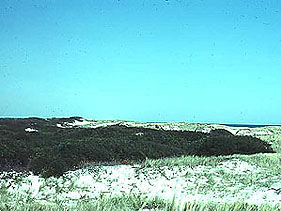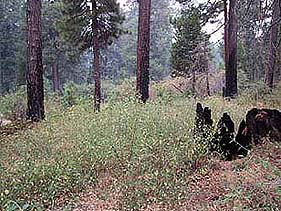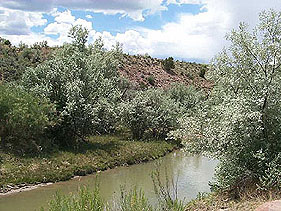


Morella pensylvanica (bayberry), New Jersey, D. Benson
Understory Ceanothus velutinus, Sierra Mountains, D. Benson
Elaeagnus angustifolia Sevier Co., Utah. J.S. Peterson, USDA-NRCS PLANTS Database
Actinorhizal plants are a diverse group of woody species found on all continents (except Antarctica). Many are common plants, like alder, bayberry, sweet fern, etc. that one might pass every day. Others live in remote parts of the world.
Most actinorhizal plant species are pioneers on nitrogen-poor soils. They colonize "new" soils behind retreating glaciers, after volcanic eruptions, in new sand dunes after coastal erosion or clear cuts in the forest. They are abundant in temperate forests (Alnus sp.), in dry chaparral and matorral (Ceanothus, Colletia, Trevoa, Chamaebatia, Cercocarpus, Purshia), in coastal dunes (Casuarina, Myrica, Hippophae), and in some alpine communities (Alnus) and cool climates (Alnus, Dryas) such as in Scandinavia, Canada, Alaska or New Zealand where legumes are insignificant or absent. They help to establish and maintain forests and shrublands, particularly on occasions where climate change or human activities disrupt ecosystems.
Some actinorhizal plants can be used as sources of biomass for generating energy or for carbon storage; some have been used for remediating stressed or contaminated soils.
The availability of Frankia genomes is helping to clarify the evolution of prokaryote/plant symbioses, environmental and geographical adaptation, metabolic diversity and horizontal gene flow among symbiotic prokaryotes.